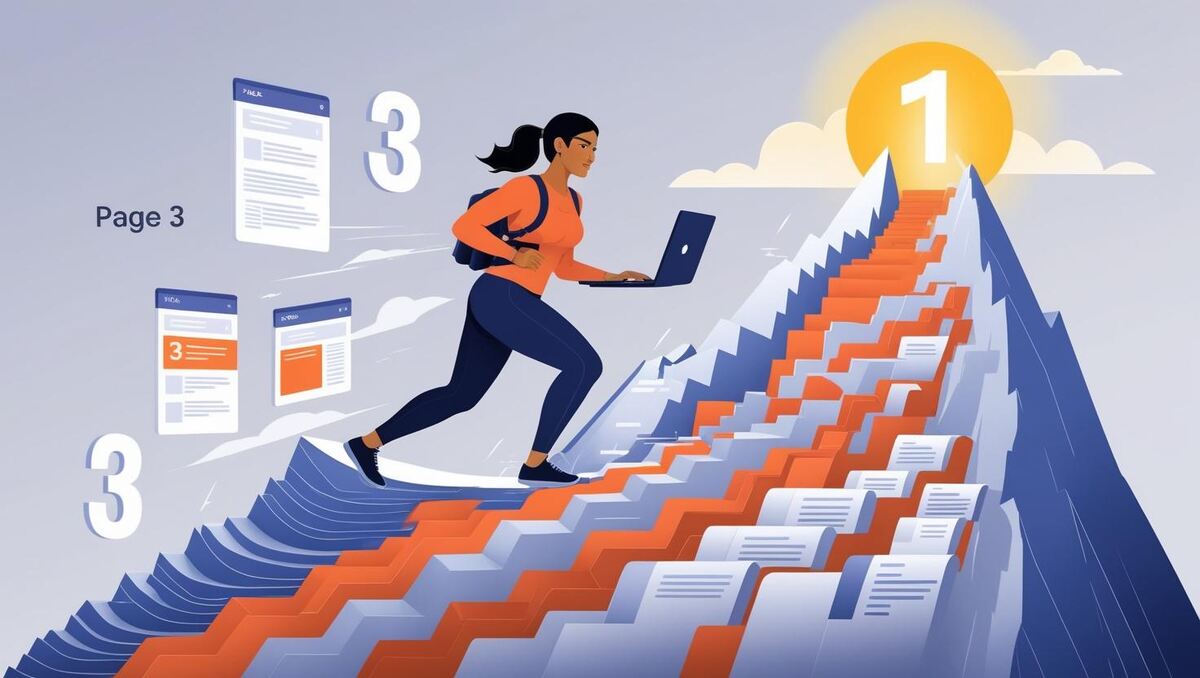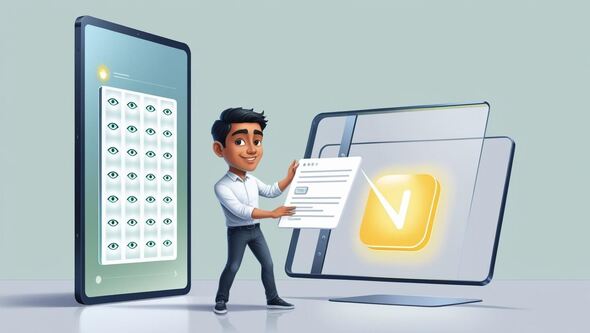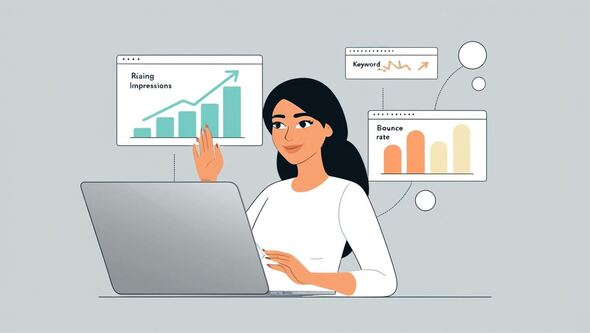Table of Contents
🧠 Step 1: Understand Why You’re on Page 3
📀 Step 2: Match the Search Intent and Make It Clear
Here’s how to improve clarity:
🧱 Step 3: Add Depth and Structure
🔗 Step 4: Strengthen Internal Links
🗓 Step 5: Refresh and Resubmit Your Content
📣 Bonus Step: Re-Promote the Post
You put in the work. You picked a topic, wrote a thoughtful blog post, and even followed the SEO checklists. But instead of landing on page one, your content is buried on page 3 of the search results.
Sound familiar?
You’re not alone — and the good news is, if your page is showing up at all, Google sees potential. It just means your content needs a little sharpening.
In this guide, you’ll learn how to move your blog post from page 3 to page 1 — using plain-English, practical steps that don’t require advanced SEO skills. This is the exact process SEO pros use (but without the jargon), and it’s built for DIY marketers, solopreneurs, and small business owners who want real results.
🧠 Step 1: Understand Why You’re on Page 3
If you're ranking around position 20–30, your content is close — but not quite right. Usually, it’s because:
- 🔍 It doesn’t fully match what people are searching for
- 🧱 It’s too thin or lacks depth
- 🔗 It doesn’t have enough internal links
- 🤖 It’s not structured clearly enough for Google to “understand”
Open Google Search Console and look at:
- The keywords this page ranks for
- The average position for each keyword
- The click-through rate (CTR)
This will show you where you’re being seen — and ignored — so you know what to fix.
📀 Step 2: Match the Search Intent and Make It Clear
If someone searches for “how to get backlinks,” they don’t want a blog post about “how to promote content.”
Here’s how to improve clarity:
- Update your H1 (headline) and SEO title (meta title) to match exactly what people are searching for
- Use the keyword naturally in:
- The first paragraph
- A subheading
- The meta description
- Add a summary or quick answer section up top (a TL;DR)
📌 Pro Tip: Use Google’s “People Also Ask” box to find related questions, then answer those in your post.
🧱 Step 3: Add Depth and Structure
Google favors complete, easy-to-scan content.
Make your post more useful by:
- Breaking it into clear sections with H2s and H3s
- Adding bullet points, checklists, and examples
- Including real-life scenarios or screenshots
- Writing a short FAQ section (and using schema if possible)
- Linking to other posts that support the topic
💡 Think of this as turning your post into a step-by-step guide, not a one-off opinion piece.
🔗 Step 4: Strengthen Internal Links
Internal links help Google understand how important a page is — and they guide readers too.
Here’s what to do:
- Find 2–3 older posts and link to the page you want to improve
- Use keyword-based anchor text (e.g., our DIY SEO guide)
- Add a link from your homepage or solution page if it’s relevant
💡 Every internal link is like a vote of confidence. More quality links = more visibility.
🗓 Step 5: Refresh and Resubmit Your Content
You’ve updated the content. Now it’s time to tell Google.
- Change the publish date to today
- Add “Updated for 2025” somewhere in the intro
- Go to Search Console → Inspect URL → Request indexing
You’ll usually see movement within a week or two — sometimes faster.
📣 Bonus Step: Re-Promote the Post
Don’t let a great update sit quietly.
- Share it on social media with a fresh hook
“Just updated: our guide to moving from page 3 to page 1 on Google.” - Add it to your next email newsletter
- Mention it in newer blog posts that relate
🔄 Every share = a signal to Google (and a chance for backlinks).
📚 Frequently Asked Questions
Q: How long does it take to move from page 3 to page 1 on Google?
A: It depends on your site’s authority, competition for the keyword, and how effectively you update the page. Many users start seeing movement within 1–4 weeks after making improvements.
Q: How do I know what keywords my page is ranking for?
A: You can use Google Search Console to see which keywords are bringing impressions to your page. Tools like goalskeeper.io make it even easier by highlighting this for you automatically.
Q: What’s the difference between page title and meta title?
A: The page title (H1) is what users see on the page itself. The meta title appears in Google search results. Both should clearly reflect what the page is about.
Q: Do I need backlinks to move up in the rankings?
A: Backlinks help, especially from relevant and authoritative sites, but they’re not required for every ranking jump. Internal links and content improvements can go a long way.
Q: Should I create a new post or improve an existing one?
A: If your post is already on page 3 or higher, it's better to improve the existing content rather than start from scratch. Google values freshness and content updates.
Q: Can I use AI to help with SEO content updates?
A: Yes — tools like OpenAI can help rewrite sections, expand thin content, or brainstorm FAQs. Just make sure the content remains human-readable and relevant to your audience.
✅ Final Thoughts: From Invisible to Unmissable
If your blog post is on page 3, you’re not doing it wrong — you’re almost there. With small, intentional changes, you can rise above the noise and start seeing real organic traffic.
Most people give up at this stage. But with tools like goalskeeper.io, you can catch these early opportunities and act before they fade.
💡 Pro Tip:
goalskeeper.io automatically flags which pages are stuck on page 3 — and tells you exactly what changed, so you can fix it fast.
Built for solopreneurs and small teams, no tech skills needed.
Read to next step?
Achieve Digital Marketing Success
Effortless Digital Marketing Analytics with goalskeeper.io
Start Free Trial





